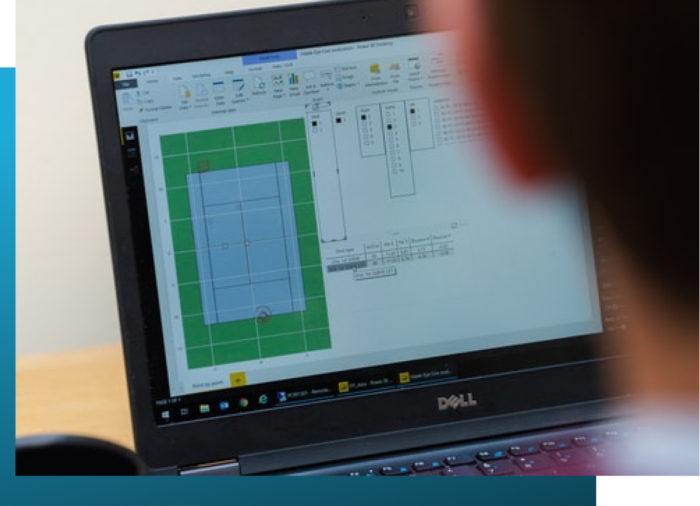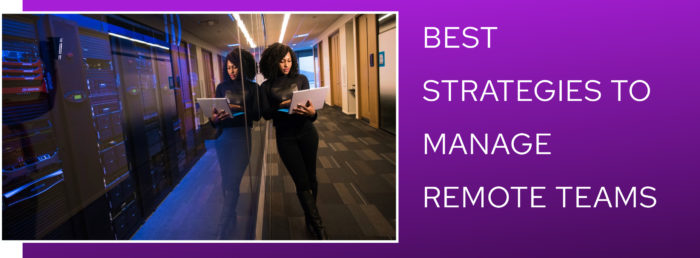- June 20, 2020 10:47 am
- by Deepthy
- June 20, 2020 10:47 am
- by Deepthy
Get the latest information about the best strategies to manage your remote team.
Discover the challenges that are involved in managing remote teams.
In unprecedented times such as these, many tech companies are increasingly shifting to a remote work environment. Although remote work was common among companies before, today there is a huge surge in the resources that are working remotely even across different time zones. As a way to cut down on development expenses and bring out a Minimum Viable Product(MVP), some companies are now following a globally distributed team model. In this model, they hire offshore developers to work with their in-house team. As the rest of your inhouse team is working from home, an offshore team will feel like a part of your development team. Apart from cutting your development expenses, hiring remote developers, especially from offshore software development companies give your company the added benefit of accessing global talents skilled in multiple tech stacks. This will greatly help you to minimize time to market your software product.
Maintaining onshore remote teams may not be always cost-effective. companies still need to pay them with a full-time salary and other benefits entitled to a regular employee. Whereas, a distributed team model can be a viable option for businesses who require a cost-effective development process
In this blog post, we will provide you with the top strategies that can help you to efficiently manage your remote team even if they are separated by two or more time zones.
Before we dive into the strategies, we’ll outline some of the challenges that you’ll probably encounter while working with a remote team:
Read More: How Companies Benefit When Employees Work Remotely?
These are some of the real challenges. But these are certainly resolvable ones. Let’s drill down some strategies to mitigate these challenges.
 While transitioning from an on-premise office to a remote environment, communication becomes significantly harder. We all know that no communication tools can replace the convenience of face-to-face communication for sharing and brainstorming new ideas.It’s a hard fact that remote or distributed teams don’t have the luxury to communicate face to face. However, by making effective use of modern collaboration tools and video conferencing platforms such as Zoom, Slack, or Microsoft teams. Remote teams can counter this issue of communication gap to a greater extent.
While transitioning from an on-premise office to a remote environment, communication becomes significantly harder. We all know that no communication tools can replace the convenience of face-to-face communication for sharing and brainstorming new ideas.It’s a hard fact that remote or distributed teams don’t have the luxury to communicate face to face. However, by making effective use of modern collaboration tools and video conferencing platforms such as Zoom, Slack, or Microsoft teams. Remote teams can counter this issue of communication gap to a greater extent.
Communication tools such as Slack, Skype for business, and Microsoft Teams enable remote or distributed teams to chat, share files, and set up video conferencing. Remote teams can also utilize file hosting services such as Dropbox to securely store and share content between their team members.
 Following agile practices such as continuous integration and pair programming especially in a distributed team environment can mitigate most of the challenges that we mentioned above.
Following agile practices such as continuous integration and pair programming especially in a distributed team environment can mitigate most of the challenges that we mentioned above.
Since agile delivers high transparency and more predictable delivery, Many of the offshore software development companies that run a distributed workforce utilize this framework.Lack of development visibility, less stakeholder engagement, and delays in delivery are some of the challenges a distributed team can encounter in the absence of a proper software development methodology. Hence, enabling agile methodologies to remote or distributed workforce projects can help managers to better plan and execute it.
For remote teams that distribute tasks between time zones, daily stand-ups and scrum calls make it easier for the team to ask questions so everyone can instantly work on it as soon as the meeting is over.
 Experts always say that documentation is the key while managing a remote team. Remote and distributed teams need more documentation than an on-premise team normally requires.This is because remote team members can’t quickly transfer ideas of a complex project by sketching on a whiteboard. Rather than addressing your development and testing teams verbally, Effectively documenting project concepts and requirements can keep them aligned to the project.
Experts always say that documentation is the key while managing a remote team. Remote and distributed teams need more documentation than an on-premise team normally requires.This is because remote team members can’t quickly transfer ideas of a complex project by sketching on a whiteboard. Rather than addressing your development and testing teams verbally, Effectively documenting project concepts and requirements can keep them aligned to the project.
 Project management is one of the biggest challenges when it comes to distributed teams. Having a PMS Project management software that can track their team’s productivity can be highly beneficial for project managers that manage a remote or distributed team. Distributed teams that use custom project management software can eliminate downtime and delays in project delivery. By adopting this software, project managers can use this software to monitor his team and project in realtime. Apart from that, they also have tools and functionalities that help your team to handle work in a timely fashion.
Project management is one of the biggest challenges when it comes to distributed teams. Having a PMS Project management software that can track their team’s productivity can be highly beneficial for project managers that manage a remote or distributed team. Distributed teams that use custom project management software can eliminate downtime and delays in project delivery. By adopting this software, project managers can use this software to monitor his team and project in realtime. Apart from that, they also have tools and functionalities that help your team to handle work in a timely fashion.
Here’s what you can do with project management software:
No matter how your company operates, all teams must be in line to maintain a consistent culture across different time zones, learn and adapt to effectively share work between distributed teams, and embrace proper communication
Apart from these, there are tons of other things a team lead or project manager can do to ensure smooth management of remote teams. Some of that includes motivating your team members, constantly engaging your remote worker’s via communication platforms, scheduling webinars, and coaching sessions, and many more. In the end, it all comes down to trust between the employee and the company.
Guaranteed Response within One Business Day!

How Much Does It Cost to Design an App?

Angular Best Practices For Web Applications

How to Set Up a Development Environment in React.JS?

What are the 6 Models Used In SDLC?

Why React Front-End Development is the Best

Guaranteed Response within One Business Day!
Sending..
